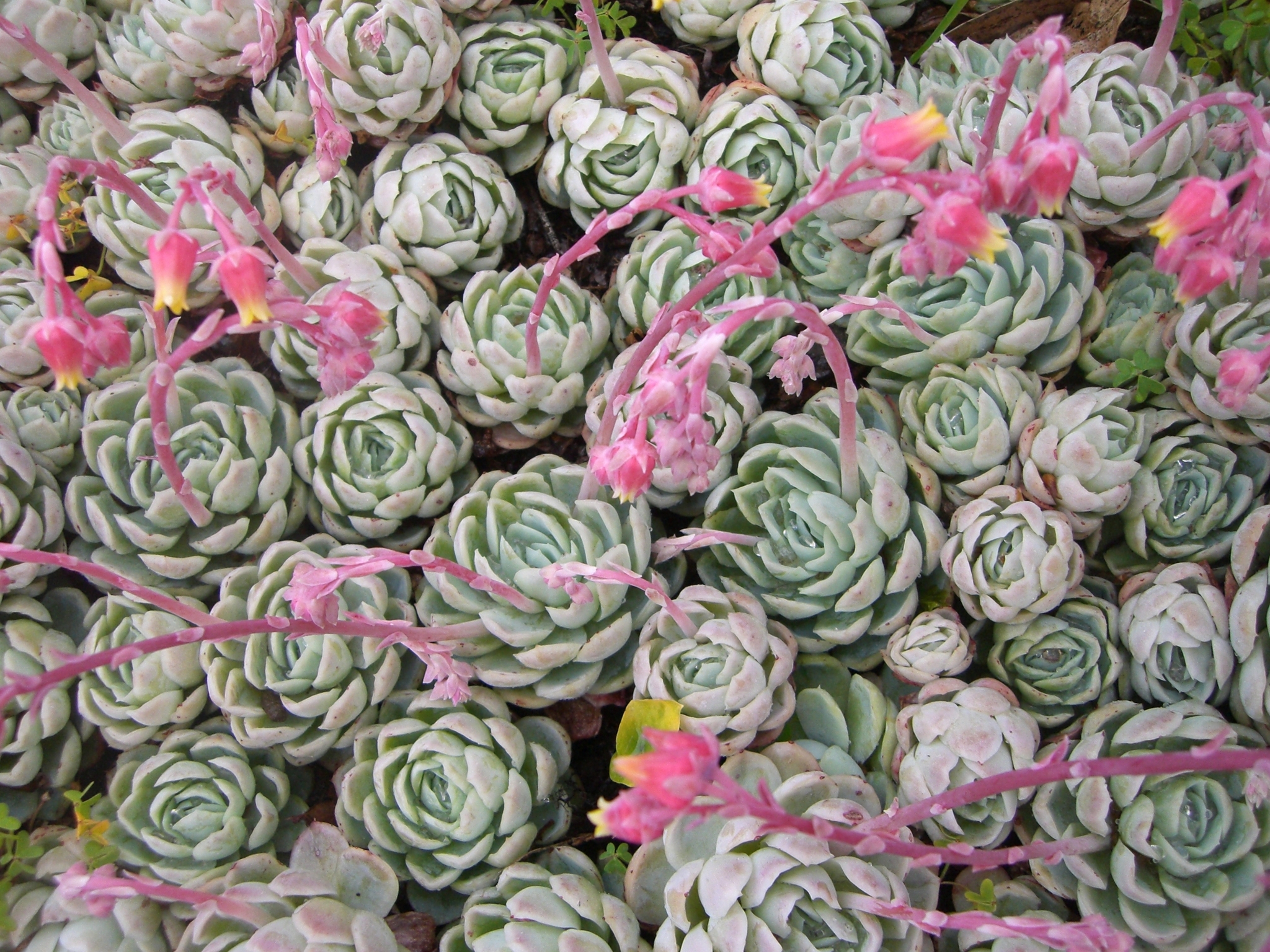
Commemorating Atanasio Echeverria, a botanical draftsman employed in the production of Flora
Mexicana, published in 1858.
Mostly evergreen, short-stemmed, small shrubs and perennial herbs. Leaves not deciduous, scattered or in dense rosettes, mostly entire and stalkless, fleshy. Flower clusters lateral. Sepals 5, united or not, more or less equal. Petals 5, united into a 5-angled base, red-orange, yellow-green or white. Stamens 10, unequal. Carpels 5.
A variable and difficult collectors' genus with many garden hybrids and cultivars that complicate identification. Their appealing colours make them ideal as major components of formal carpet bedding schemes. Habits may also vary with the growing conditions.A few of the commoner species and cultivars are mentioned. In recent times a number of American hybrids with large leaves that have wavy edges have been grown: examples are 'Chantilly' and 'Berkeley'. Hart &Eggli (1995) point out that Echeveria is a genus of convenience with a close relationship to Sedum that needs re-evaluation. It is also possible that all N American Crassulaceae with lateral inflorescences could be united into an amplified genus Echeveria. Dudleya Britt. & Rose is a closely related genus that differs in having broad-based leaves and less showy flowers, the corolla being rolled in bud and the sepals erect or adpressed; the species with extremely ornamental waxy-white leaves are particularly popular.
There are many hybrids in cultivation and E. harmsii is probably the major parent.
About 130-150 species (depending on authority) from the USA south to Mexico, C and S America.
Cuttings, detached leaves and offsets and seed.
Leaves usually in rosettes, with narrow bases and hence easily detached; flowers 5-sided in section with fleshy, keeled, basally fused petals, usually 5-parted.
Walther (1972), Carruthers &Ginns (1974).
Source: (2002). Crassulaceae. In: . Horticultural Flora of South-eastern Australia. Volume 3. Flowering plants. Dicotyledons. Part 2. The identification of garden and cultivated plants. University of New South Wales Press.

Hybrid e. harmsii j.f. Macbr. _ e. setosa Rose &Purpus. A subshrub similar to e. harmsii but with more flowers and leaves crowded and covered with white hair. Leaves bright green with maroon margins and apices, later becoming brown. Origin Victor Reiter Jr, 1932.